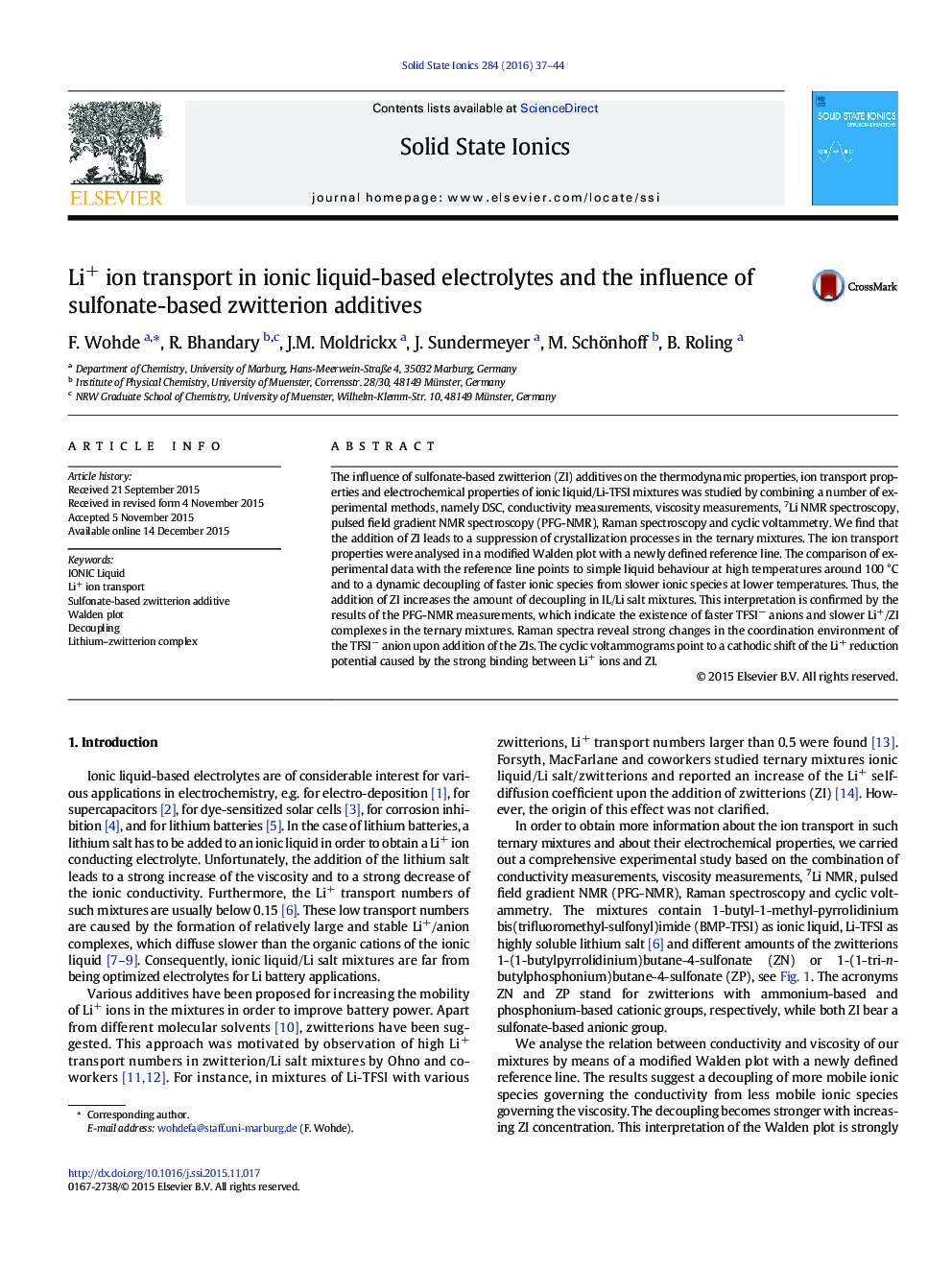| کد مقاله | کد نشریه | سال انتشار | مقاله انگلیسی | نسخه تمام متن |
|---|---|---|---|---|
| 1295271 | 1498259 | 2016 | 8 صفحه PDF | دانلود رایگان |
• Modified Walden plot analysis and newly defined reference lines
• Stokes–Einstein violations due to decoupling effects
• Breakup of Li-TSFI complexes and thermodynamic stabilization of Li+ ions in Li+–zwitterion complexes
• Slowing down of Li+ ion transport and enhancement of TFSI− ion transport after addition of zwitterions
The influence of sulfonate-based zwitterion (ZI) additives on the thermodynamic properties, ion transport properties and electrochemical properties of ionic liquid/Li-TFSI mixtures was studied by combining a number of experimental methods, namely DSC, conductivity measurements, viscosity measurements, 7Li NMR spectroscopy, pulsed field gradient NMR spectroscopy (PFG-NMR), Raman spectroscopy and cyclic voltammetry. We find that the addition of ZI leads to a suppression of crystallization processes in the ternary mixtures. The ion transport properties were analysed in a modified Walden plot with a newly defined reference line. The comparison of experimental data with the reference line points to simple liquid behaviour at high temperatures around 100 °C and to a dynamic decoupling of faster ionic species from slower ionic species at lower temperatures. Thus, the addition of ZI increases the amount of decoupling in IL/Li salt mixtures. This interpretation is confirmed by the results of the PFG-NMR measurements, which indicate the existence of faster TFSI− anions and slower Li+/ZI complexes in the ternary mixtures. Raman spectra reveal strong changes in the coordination environment of the TFSI− anion upon addition of the ZIs. The cyclic voltammograms point to a cathodic shift of the Li+ reduction potential caused by the strong binding between Li+ ions and ZI.
Figure optionsDownload as PowerPoint slide
Journal: Solid State Ionics - Volume 284, January 2016, Pages 37–44
